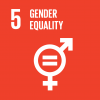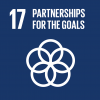Difference between revisions of "UN-REDD Programme"
(Spreadsheet import) |
|||
| (17 intermediate revisions by 3 users not shown) | |||
| Line 5: | Line 5: | ||
|Website address=http://www.un-redd.org | |Website address=http://www.un-redd.org | ||
|Starting year=2008 | |Starting year=2008 | ||
| − | | | + | |Secretariat=UN-REDD Programme Secretariat, International Environment House, 11-13 Chemin des Anémones, CH-1219 Châtelaine, Geneva, Switzerland, Ph: +41 (0) 22 917 8946, e-mail: un-redd@un-redd.org |
| − | + | |Organisational structure=The UN-REDD Programme has an Executive Board that decides on strategic direction and budget allocation. The Executive Board is made up of representatives from partner countries, donors to the Multi-Partner Trust Fund, civil society, indigenous peoples and the Programme's three UN collaborating agencies (FAO, UNDP and UNEP). The Programme’s Secretariat, based in Geneva, supports the successful implementation of the Programme by coordinating the activities of the three UN agencies. | |
| − | | | + | |Geographical coverage=Global |
| − | + | |Name of lead organisation=UN-REDD Programme | |
| − | + | ||
| − | + | ||
| − | + | ||
| − | + | ||
| − | + | ||
| − | + | ||
| − | + | ||
| − | |Geographical coverage=Global | + | |
| − | | | + | |
| − | + | ||
| − | + | ||
| − | + | ||
| − | + | ||
| − | + | ||
|Type of lead organisation=International organisation | |Type of lead organisation=International organisation | ||
|Location/Nationality of lead organisation=Switzerland | |Location/Nationality of lead organisation=Switzerland | ||
| − | | | + | |LPAA Theme Transport=No |
| − | | | + | |LPAA Theme Agriculture=Yes |
| − | | | + | |LPAA Theme Forestry=Yes |
| − | | | + | |LPAA Theme Business=No |
| − | | | + | |LPAA Theme Financial institutions=No |
| − | | | + | |LPAA Theme Buildings=No |
| − | | | + | |LPAA Theme Industry=No |
| − | | | + | |LPAA Theme Waste=No |
| − | | | + | |LPAA Theme Cities and subnational governments=No |
| + | |LPAA Theme Short Term Pollutants=No | ||
| + | |LPAA Theme International maritime transport=No | ||
| + | |LPAA Theme Energy Supply=No | ||
| + | |LPAA Theme Fluorinated gases=No | ||
| + | |LPAA Theme Energy efficiency=No | ||
| + | |LPAA Theme Renewable energy=No | ||
| + | |LPAA Theme Supply chain emission reductions=No | ||
| + | |LPAA Theme Adaptation=Yes | ||
| + | |LPAA Theme Other=No | ||
| + | |LPAA Theme Resilience=Yes | ||
| + | |LPAA Theme Innovation=No | ||
| + | |LPAA Theme Energy Access and Efficiency=No | ||
| + | |LPAA Theme Private Finance=Yes | ||
| + | |Description=The UN-REDD Programme is the United Nations' flagship partnership on Reducing Emissions from Deforestation and forest Degradation (REDD) in developing countries. It was the UN's first interagency climate change initiative combing the technical expertise and convening power of FAO, UNDP and UNEP. | ||
| + | |Goals=With the goal to reduce forest emissions and enhance carbon stocks in forests while contributing to national sustainable development the UN-REDD Programme supports nationally-led REDD+ processes and promotes the informed and meaningful involvement of all stakeholders, including Indigenous Peoples and other forest-dependent communities, in national and international REDD+ implementation. | ||
| + | |Activities=UN-REDD supports partner countries through: | ||
| + | - Direct support to the design and implementation of National REDD+ Programmes; | ||
| + | - Complementary tailored support to national REDD+ actions; | ||
| + | - Technical capacity building support through sharing of expertise, common approaches, analyses, methodologies, tools, data, best practices and facilitated South-South knowledge sharing | ||
| + | - Facilitation of a REDD+ dialogue between governments, civil society, private sector and technical experts. | ||
| + | Areas: | ||
| + | - Forest governance | ||
| + | - Stakeholder engagement / FPIC | ||
| + | - Tenure security | ||
| + | - Gender equality | ||
| + | - National forest monitoring systems | ||
| + | - Safeguards | ||
| + | - Multiple benefits | ||
| + | - Green economy | ||
| + | |One or two success stories achieved=https://www.10year.un-redd.org/ | ||
| + | |||
| + | http://stories.un-redd.org/ | ||
| + | |Participants national actors number=66 | ||
| + | |Participants national actors names=Africa: Benin, Burkina Faso, Cameroon, Central African Republic, Chad, Congo, Côte d'Ivoire, Democratic Republic of the Congo, Equatorial Guinea, Ethiopia, Gabon, Ghana, Guinea, Guinea Bissau, Kenya, Liberia, Madagascar, Malawi, Morocco, Nigeria, South Sudan, Sudan, Tanzania, Togo, Tunisia, Uganda, Zambia, Zimbabwe, Asia: Bangladesh, Bhutan, Cambodia, Fiji, India, Indonesia, Lao Peoples' Democratic Republic, Malaysia, Mongolia, Myanmar, Nepal, Pakistan, Papua New Guinea, Philippines, Samoa, Solomon Islands, Sri Lanka, Thailand, Vanuatu, Viet Nam, Latin America: Argentina, Bolivia, Chile, Colombia, Costa Rica, Dominican Republic, Ecuador, El Salvador, Guatemala, Guyana, Honduras, | ||
| + | Jamaica, Mexico, Panama,Paraguay, Peru, Suriname. | ||
| + | |Participants intergovernmental organisations number=3 | ||
| + | |Participants intergovernmental organisations names=FAO, UNDP, UNEP | ||
| + | |Participants supporting partners number=7 | ||
| + | |Participants supporting partners names=Norway, Denmark, Luxembourg, Spain, Japan, Switzerland, EC | ||
| + | |Number of members={{Number of members | ||
| + | |Number of members year=2020 | ||
| + | |Number of members value=69 | ||
| + | }} | ||
| + | |Have only national states as participators=Yes | ||
| + | |SDGS=E_SDG_goals_icons-individual-rgb-01.png, E_SDG_goals_icons-individual-rgb-02.png, E_SDG_goals_icons-individual-rgb-05.png, E_SDG_goals_icons-individual-rgb-13.png, E_SDG_goals_icons-individual-rgb-15.png, E_SDG_goals_icons-individual-rgb-17.png | ||
| + | |Indicators information= | ||
| + | |Available reporting=https://2018ar.unredd.net/ | ||
| + | |Related initiatives= | ||
| + | |Goal mai= | ||
}} | }} | ||
Latest revision as of 13:12, 12 October 2020
General
| Name of initiative | UN-REDD Programme |
|---|---|
| LPAA initiative | No |
| NAZCA Initiative | No |
| Website address | http://www.un-redd.org |
| Related initiatives | |
| Starting year | 2008 |
| End year | |
| Secretariat | UN-REDD Programme Secretariat, International Environment House, 11-13 Chemin des Anémones, CH-1219 Châtelaine, Geneva, Switzerland, Ph: +41 (0) 22 917 8946, e-mail: un-redd@un-redd.org |
| Organisational structure | The UN-REDD Programme has an Executive Board that decides on strategic direction and budget allocation. The Executive Board is made up of representatives from partner countries, donors to the Multi-Partner Trust Fund, civil society, indigenous peoples and the Programme's three UN collaborating agencies (FAO, UNDP and UNEP). The Programme’s Secretariat, based in Geneva, supports the successful implementation of the Programme by coordinating the activities of the three UN agencies. |
| Geographical coverage | Global |
| Name of lead organisation | UN-REDD Programme |
| Type of lead organisation | International organisation |
| Location/Nationality of lead organisation | Switzerland |
Description
| Description | The UN-REDD Programme is the United Nations' flagship partnership on Reducing Emissions from Deforestation and forest Degradation (REDD) in developing countries. It was the UN's first interagency climate change initiative combing the technical expertise and convening power of FAO, UNDP and UNEP. |
|---|---|
| Objectives | With the goal to reduce forest emissions and enhance carbon stocks in forests while contributing to national sustainable development the UN-REDD Programme supports nationally-led REDD+ processes and promotes the informed and meaningful involvement of all stakeholders, including Indigenous Peoples and other forest-dependent communities, in national and international REDD+ implementation. |
| Activities | UN-REDD supports partner countries through:
- Direct support to the design and implementation of National REDD+ Programmes; - Complementary tailored support to national REDD+ actions; - Technical capacity building support through sharing of expertise, common approaches, analyses, methodologies, tools, data, best practices and facilitated South-South knowledge sharing - Facilitation of a REDD+ dialogue between governments, civil society, private sector and technical experts. Areas: - Forest governance - Stakeholder engagement / FPIC - Tenure security - Gender equality - National forest monitoring systems - Safeguards - Multiple benefits - Green economy |
| One or two success stories achieved | https://www.10year.un-redd.org/ |
Monitoring and Impacts
Sustainable Development Impact:






| Function of initiative | |
|---|---|
| Activity of initiative | |
| Indicators | |
| Goals | |
| Comments on indicators and goals | |
| How will goals be achieved | |
| Have you changed or strenghtened your goals | |
| Progress towards the goals | |
| How are you tracking progress of your initiative | |
| Available reporting | https://2018ar.unredd.net/ |
Participants
| Participants | Number | Names | ||
|---|---|---|---|---|
| Members | 69 | |||
| Companies | 0 | |||
| Business organisations | 0 | |||
| Research and educational organisations | 0 | |||
| Non-governmental organisations | 0 | |||
| National states | 66 | Africa: Benin, Burkina Faso, Cameroon, Central African Republic, Chad, Congo, Côte d'Ivoire, Democratic Republic of the Congo, Equatorial Guinea, Ethiopia, Gabon, Ghana, Guinea, Guinea Bissau, Kenya, Liberia, Madagascar, Malawi, Morocco, Nigeria, South Sudan, Sudan, Tanzania, Togo, Tunisia, Uganda, Zambia, Zimbabwe, Asia: Bangladesh, Bhutan, Cambodia, Fiji, India, Indonesia, Lao Peoples' Democratic Republic, Malaysia, Mongolia, Myanmar, Nepal, Pakistan, Papua New Guinea, Philippines, Samoa, Solomon Islands, Sri Lanka, Thailand, Vanuatu, Viet Nam, Latin America: Argentina, Bolivia, Chile, Colombia, Costa Rica, Dominican Republic, Ecuador, El Salvador, Guatemala, Guyana, Honduras, Jamaica, Mexico, Panama, Paraguay, Peru, Suriname. | ||
| Governmental actors | 0 | |||
| Regional / state / county actors | 0 | |||
| City / municipal actors | 0 | |||
| Intergovernmental organisations | 3 | FAO, UNDP, UNEP | ||
| Financial Institutions | 0 | |||
| Faith based organisations | 0 | |||
| Other members | 0 | |||
| Supporting partners | 7 | Norway, Denmark, Luxembourg, Spain, Japan, Switzerland, EC | ||
| Number of members in the years |
| |||
| Have only national states as participators | Yes | |||
Theme
| Transport | Agriculture | Forestry | Business | Financial institutions | Buildings | Industry | Waste | Cities and subnational governments | Short Term Pollutants | International maritime transport | Energy Supply | Fluorinated gases | Energy efficiency | Renewable energy | Supply chain emission reductions | Adaptation | Other | Resilience | Innovation | Energy Access and Efficiency | Private Finance |
|---|---|---|---|---|---|---|---|---|---|---|---|---|---|---|---|---|---|---|---|---|---|
| No | Yes | Yes | No | No | No | No | No | No | No | No | No | No | No | No | No | Yes | No | Yes | No | No | Yes |
Last update: 12 October 2020 12:12:33
